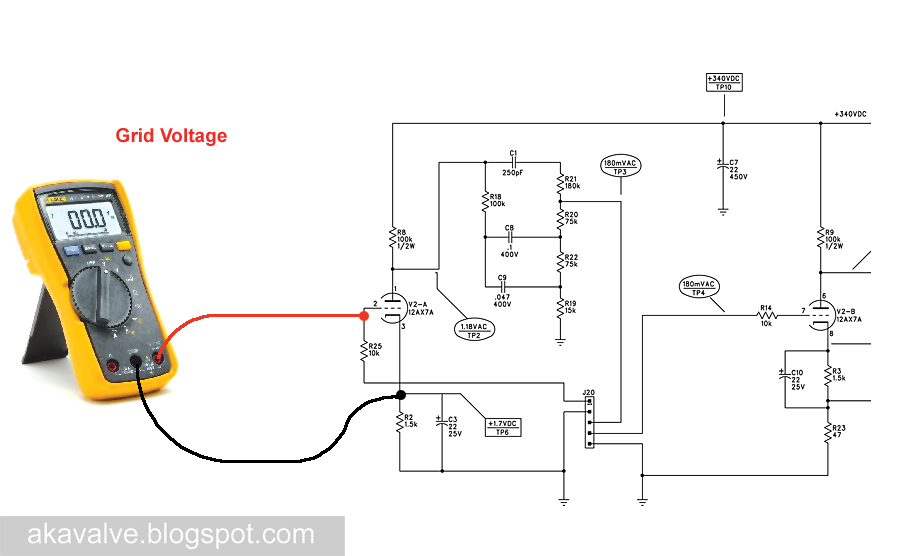The Champion 600 I've been working on came back in with a request for the cathode referenced heater mod to reduce the hum. For a single ended amp this particular one is actually pretty quiet already. It certainly hums less than any of the vintage Champs I've seen. I don't mind a little bit of hum myself but the owner is new to tube amps so he's a bit more sensitive to it than I am. The mod is a real simple one though so I thought I'd take a crack at it and see if it did anything.

R15 and R16 are the resistors that reference the heater filaments to ground. A old trick for single ended amps is to move the end of these resistors to the cathode of the output tube.
Since I've moved the cathode bypass cap as part of another mod, I had a convenient place to connect the resistors. If the cap is still there the resistors could be connected to the top of R10 instead (indicated by the red circle).

Here's a measurement taken off the output with a 4 ohm dummy load connected:

You'll notice that there's almost no reduction in the fundamental or even any of the lower harmonics. It's not until about 2K Hz that we start to see a reduction in the hum. As I mentioned earlier, this amp was pretty quiet to begin with. Curiously the owner actually perceived it as humming slightly more with the mod installed so I'm going to put it back to stock when it comes back in to get a Weber Alnico speaker put in.


























